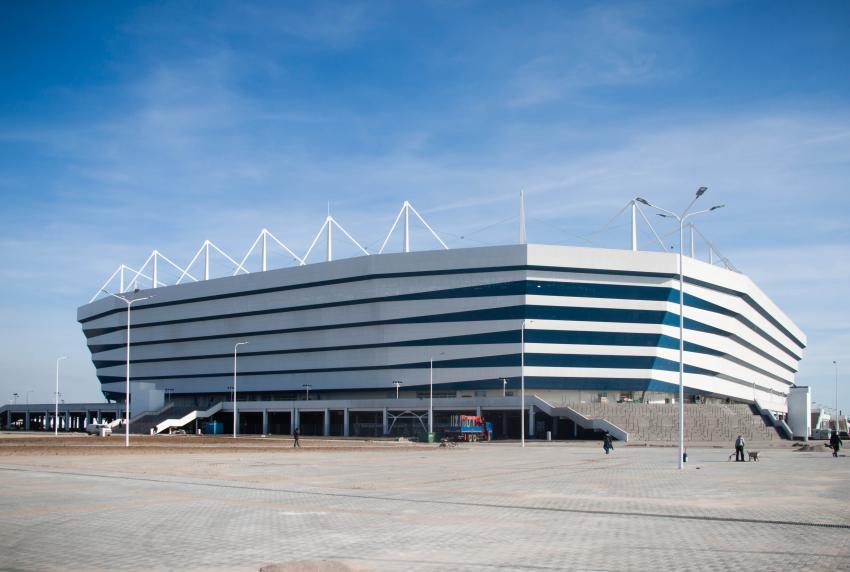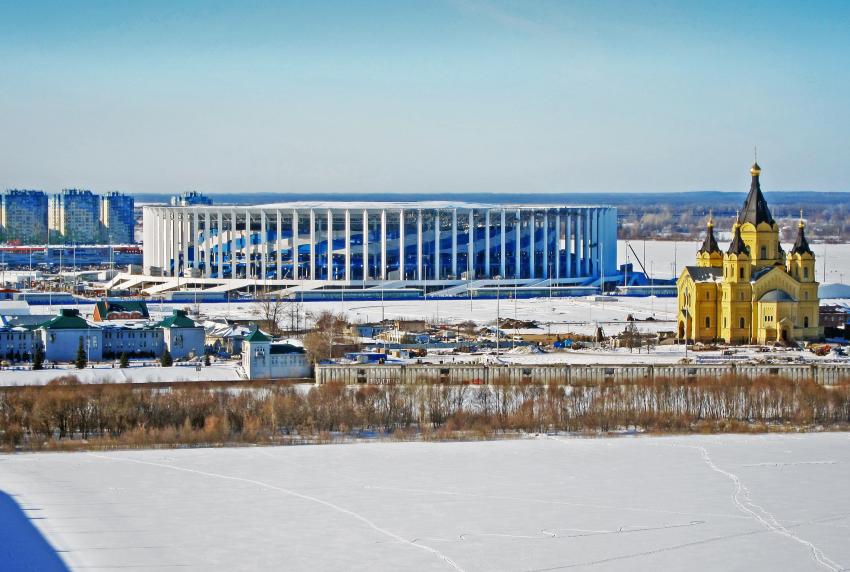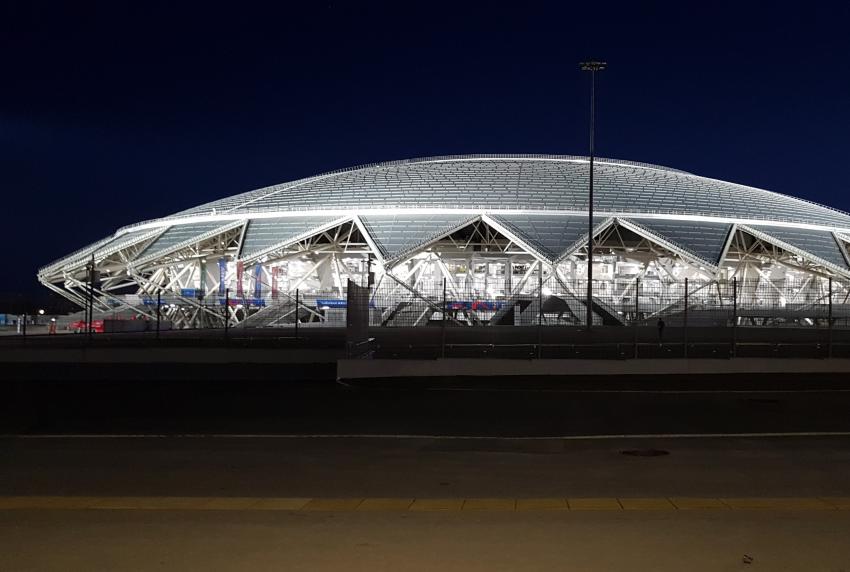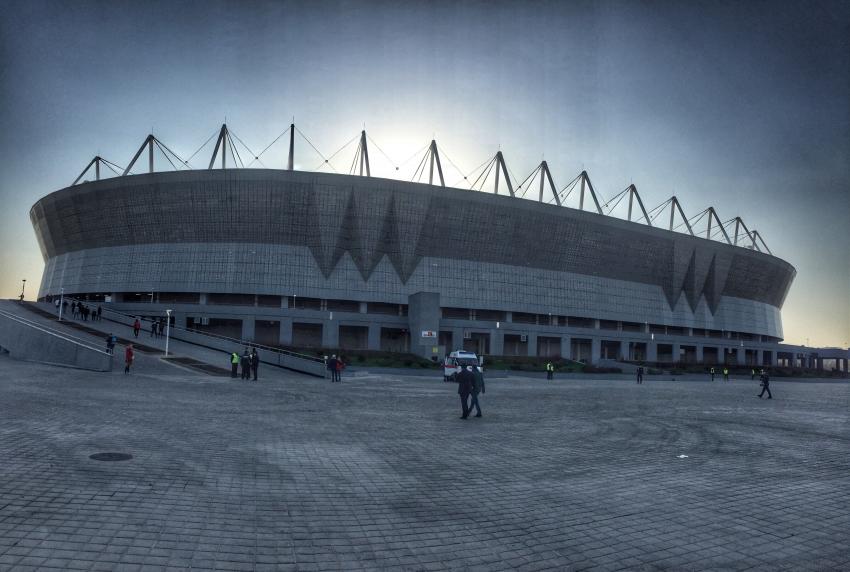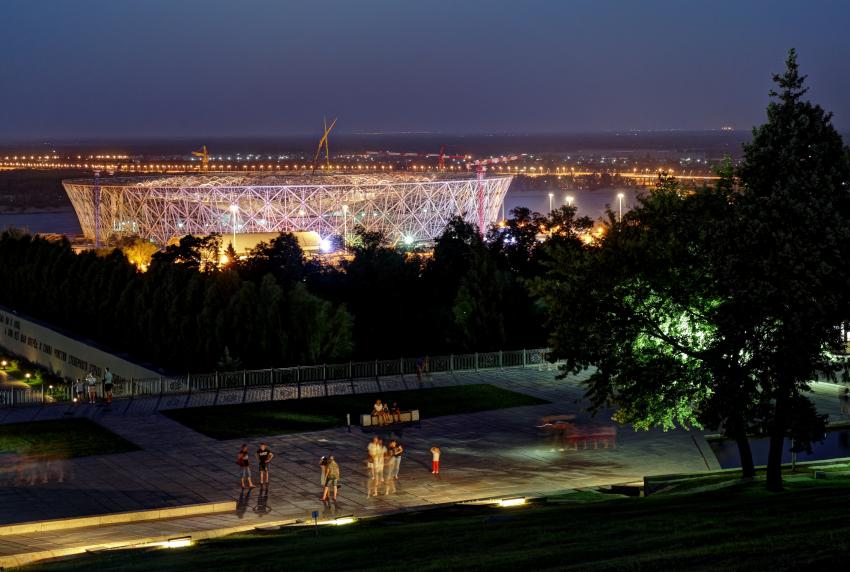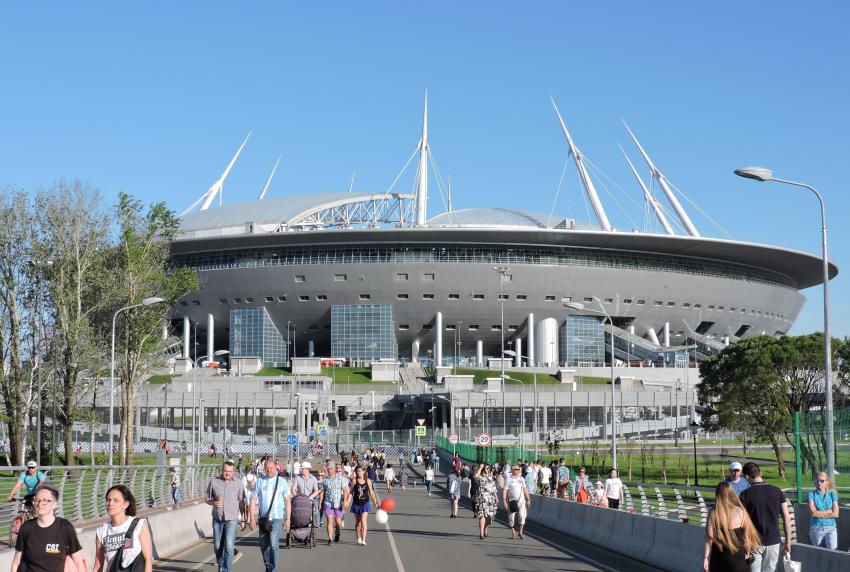Various
Various
Russia
Seven arenas opened to welcome football fans
In the run up to the 2018 World Cup, the TenderStream service supplied members with notices of opportunities to design football stadiums hosting the contest. Out of the twelve arenas in use for the 64 football matches that make up the Cup, seven are new structures with an estimated total construction cost of over 13bn GBP. The story behind the stadiums is one of highs and lows, including ambitious designs, WWII shells discovered during ground-breaking, and developer bankruptcy.
Kaliningrad Stadium, Oktyabrsky Island, Kaliningrad
The 35,212 capacity Kaliningrad Stadium will host the four first round group matches, and is also the new home of FC Baltika, a club previously occupying smaller premises. In April 2012, the regional government chose the French architectural bureau Wilmotte & Associes SA for the project, which included a development of 220 hectares. Later that year, the authorities announced an open competition to develop the project further, viewable in the TenderStream archive here. The winner, Mostovik, was later declared bankrupt, leading to delays in construction and the adoption of a simpler design than the original plans, which had included greater spectator capacity and a retractable roof.
Nizhny Novgorod Stadium, Nizhny Novgorod
In 2012, a contest for design work related to stadium construction was launched, followed by a 2013 call for firms to develop an urban development masterplan in preparation for the World Cup (both viewable in the TenderStream archive here and here). OAO Stroytransgaz was later contracted to deliver the arena, which is located in the historic area known as the Spit (Strelki) at the confluence of the Volga and the Oka Rivers. As a nod to its natural surroundings, the stadium is coloured white, blue and azure. Capacity is 45,000, including 902 seats for low-mobility groups. After the tournament, the arena will be used for home matches of FC Olimpiyets Nizhny Novgorod, a team in the Russian Football Premier League.
Mordovia Arena, Saransk
The decision to construct Mordovia Arena was made prior to Russia being announced as host nation for the World Cup, with the building intended to open for the 1000th anniversary of the unification of the Mordovian people with Russia's other ethnic groups. A notice for the planned sports facilities is viewable in the TenderStream archive here. Built to a capacity of 44,442 spectators, parts of the Mordovia Arena will be taken down following the World Cup, with FC Mordovia set to occupy the stadium, while the remaining spaces will be used for volleyball, basketball and tennis. Designed by SaranskGrazhdanProekt, the arena’s oval exterior combines orange, red and white, reflecting the colours of arts and crafts from the region.
Samara Arena, Samara
In the original bid submitted to FIFA, the new Samara stadium was planned for completion on an island to the South of the city. A lack of surrounding infrastructure prompted calls for a change in location, and another site was chosen inside the city limits. A call for firms to deliver a design for the stadium is viewable in the TenderStream Archive here. GUS SO TerrNIIgrazhdanproekt and PI Arena created a concept featuring a space-age metal dome referencing the aeronautical industries long active in the area, while the structure’s name, ‘Cosmos Arena’ is another nod to space exploration. The stadium has a capacity of 44,918 and will host group matches, a last 16 knockout match, and a quarter-final.
Rostov Arena, Rostov-on-Don
As part of planning for the new Rostov stadium, a call for design work was released in 2012 by the Ministry of Construction (viewable in the TenderStream archive here). Winning firm, Populous, delivered a concept for the 45,145 capacity arena inspired by the ancient earthworks along the banks of the River Don, the Kurgans, which were used for pagan burial rituals. During the ground-breaking ceremony in 2013, five Second World War shells were discovered, beginning a series of setbacks for the project. In 2015, the design was scaled back to lower construction costs. FC Rostov, 2014 Russian Cup winners, will occupy the stadium after the World Cup.
Volgograd Arena, Volgograd
The Volgograd Arena, with a capacity of 45,568, was built on site of the demolished Central Stadium, at the foot of the Mamayev Kurgan memorial complex near the Volga River. The Arena was designed by Moscow-based Sport-Engineering, the winner of an open tender (viewable on the TenderSteam archive here). A notable feature of the stadium is its substantial roof resting on a cable frame, arranged in a bicycle wheel pattern created by steel-wire cables. The structure is in the form of an overturned truncated cone, with a façade shape dictated by the need to fit a compact building into the available land.
St Petersburg Stadium, St Petersburg
The Krestovsky Stadium, also known as Zenit Arena, makes this list of new facilities due to its recent 2017 opening for FIFA Confederations Cup, a prelude to the World Cup. Its original completion date was planned for 2008, but delays and the withdrawal of original developer, Gazprom, led to substantial overruns and the swelling of the budget, making it one of the most expensive arenas ever built. Kisho Kurokawa won the design competition for the stadium (held before the TenderStream service went live), with a concept called The Spaceship. The 64,287 capacity stadium will host group games, a last-16 knockout match, a semi-final, and the third v fourth play-off.
Lucy Nordberg
TenderStream Head of Research
Explore the TenderStream Archive here
Start your free trial here or email our team directly at customerservices@tenderstream.com
